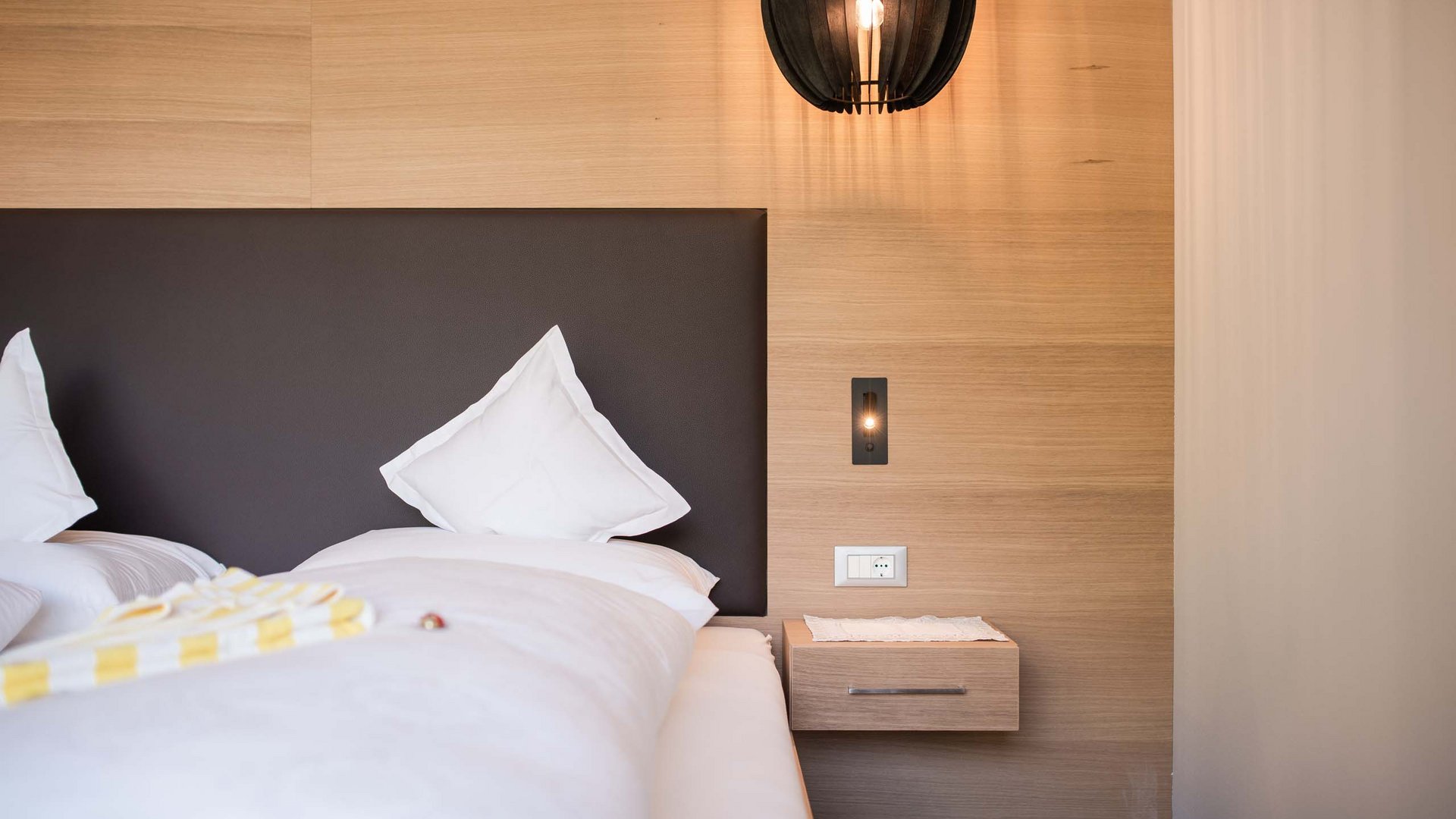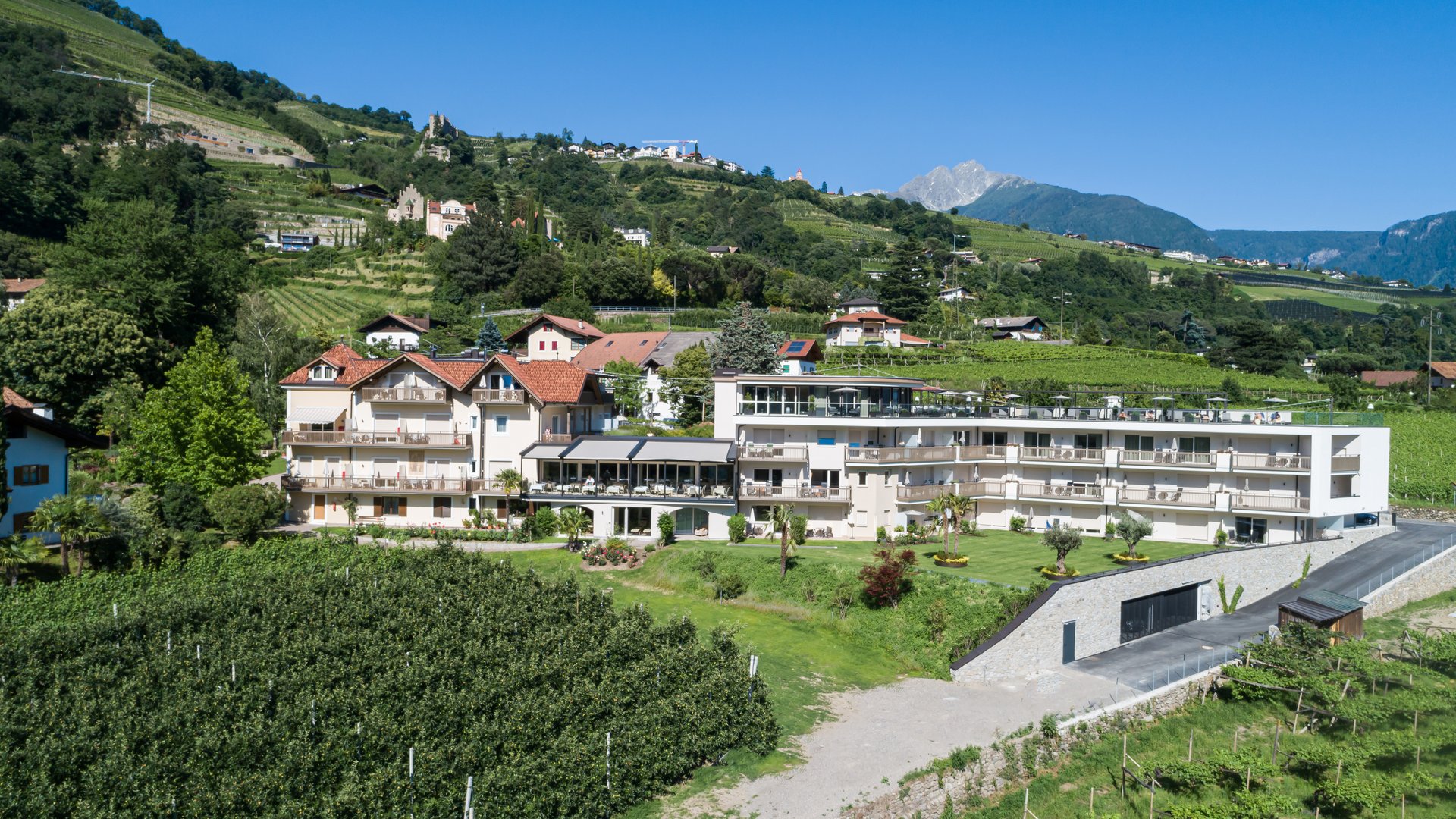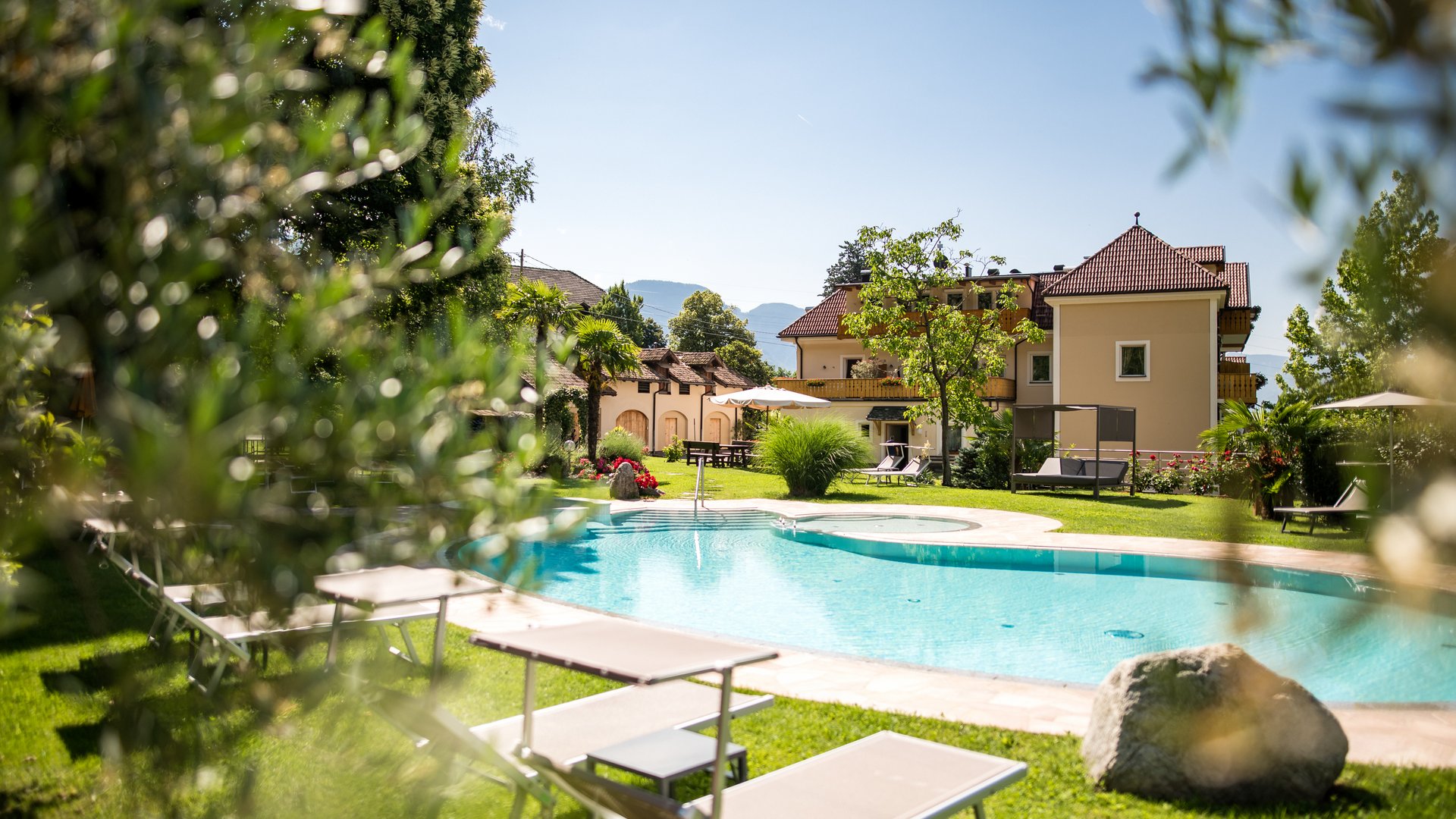From monastery to feel-good hotel
Anyone who has ever visited us knows that today’s feel-good Hotel Wessobrunn was once the summer residence of the Benedictine monastery of the same name in the Weilheim district of Germany. And many details still bear witness to this time: the heavy entrance gate greeting visitors in the reception hall, the fresco of St Mary and the ancient scroll next to the reception, the vaulted corridor in the wellness oasis, and more. Those who visit the Hotel Wessobrunn embark on a journey through time between exciting history and luxurious present.
Delving into the past
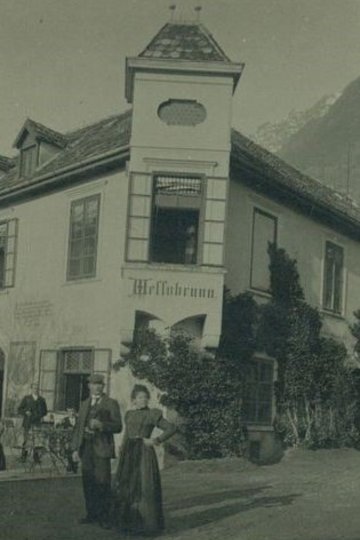
The Benedictine monastery in the district of Weilheim, Upper Bavaria, used the Wessobrunn estate in Meran, given to them by an elderly priest in 1313, as a summer residence and vineyard.
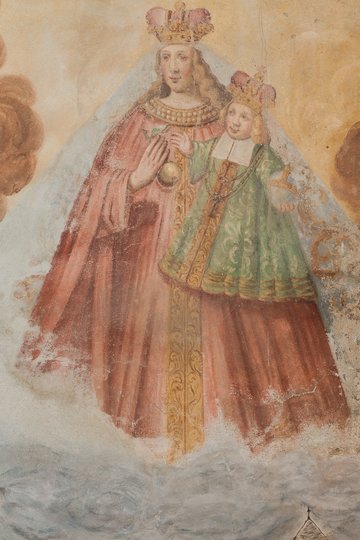
In 1803, the estate changed hands, with ownership passing to various individuals in turn, including the widowed Countess Bentinsk of Thuringia and subsequently her daughter, Countess Elisabeth Bentinsk.
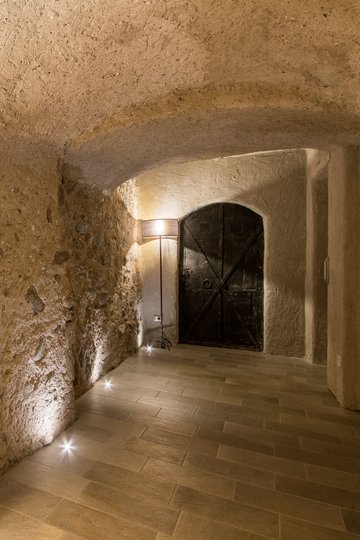
From 1918 to 1945, the Wessobrunn estate was owned by the Italian government and was even run as a coffee house for a while.
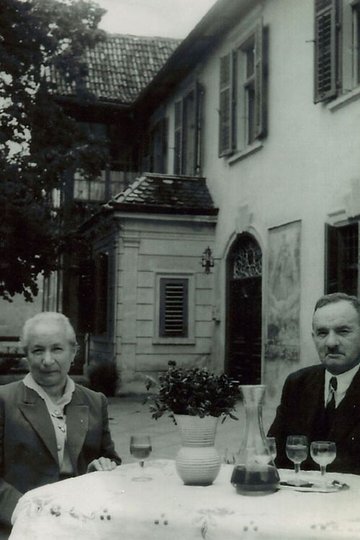
Then, after the Second World War, the Wessobrunn estate came into the possession of the Mair family.

The estate was first transformed into a guesthouse and then, over the years, into the 4-star feel-good hotel it is today.
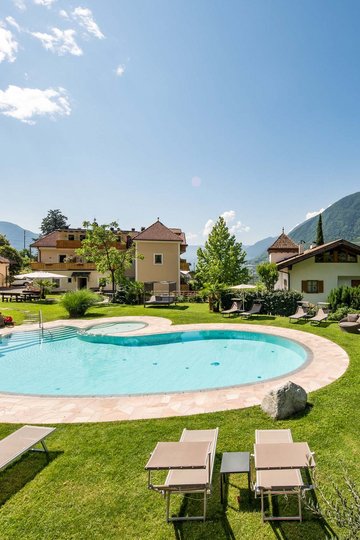
Despite these changes, the estate has retained its original name and historical ambience, evident in the surrounding vineyards and the hotel’s overall charm.


